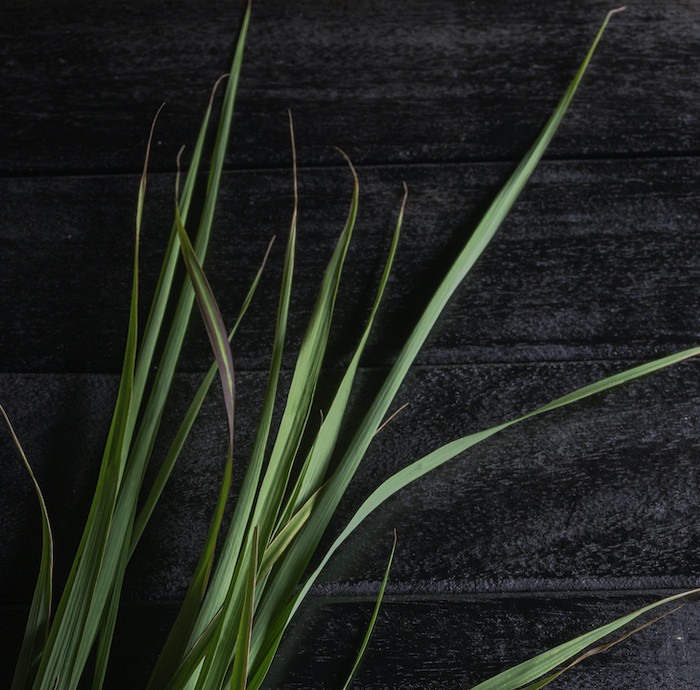
Anistatia Miller & Jared Brown take a journey through some of their more exotic home-grown ingredients as the new season’s plotting begins in earnest.
Thinking, wishing, planning our next crops of herbs, fruits and vegetables is a special event in this house. Some months ago we curled up with a fresh pile of cataglogues and a cocktail for inspiration. While we’ve talked about more familiar fare in past years, such as blackcurrants, strawberries, basil, rosemary and such, this spring we are taking you on a tour of a few tried-and-true unusual plants we nurture in our garden, plus a few we are considering for our 2023 drinks repertoire.
Why did we start this year with such an eclectic mix? First, to stimulate creativity you must look outside your comfort zone, even if it only means working with variations of what is familiar to you. Second, although you can purchase some of these botanicals in high-end farmers’ markets or from your restaurant supplier, growing your own from seed is by far cheaper, emotionally more rewarding, and leaves a smaller carbon footprint. Third, cultivating experimental botanicals in plant pots or window boxes or postage stamp garden space means you are not making a large investment before you decide your choices work for you. Fourth, remember that this is only the beginning – a launch point for researching online on your own from suppliers such as Chiltern Seeds (chilternseeds.co.uk), eBay, and Etsy. Ready? Here goes.
Who in this industry doesn’t use lemon zest? Subtle. Delicate. If you’re a fan of Thai cuisine, you may be familiar with East Indian lemongrass, which is a far more intense hit of flavour and aroma. Did you know you can raise it from seed in pots kept in a warm environment or a greenhouse? The green leaves, seemingly unavailable except in Mexican lemon tea, make a great tea or a syrup or infusion into spirits or mixers.
If you’ve already tested the thickening qualities of coconut flour or chia seed flour, it’s time to experience red leaf amaranth. The leaves are found in several Vietnamese soup recipes, but the seeds are also used as a thickener in some versions of horchata, a creamy, lightly sweet cinnamon beverage that’s usually made with rice. You can grow them in large plant pots on a terrace or patio. The added bonus is that the flowers are rather dramatic, so there’s visual potential for garnishes as well.
Turning Japanese
One of our garden regulars because of its distinctive aroma and flavour is shungiku, also known as ‘garland chrysanthemum’. We go very Japanese with this ingredient: the leaves and stalks go into tempura, or we add them to sukiyaki. But their slightly bitter taste complements honey, sake, and tamarind if you want to think about syrups or tinctures that need complexity. The white with yellow-centred flowers make a delicate edible garnish. This plant grows in vegetable gardens and in herb pots. Start a small batch and watch your imagination convince you to grow them once every few weeks so you have ready supply.
Looking for a peppery, rocket-like flavour with a salty tang? Grow a batch of an heirloom Japanese vegetable called okahijiki, meaning ‘seaweed on land’. Treat this one like a microgreen, planted in shallow window boxes for use in savoury cocktails. Or grow in a warm greenhouse environment in plant pots. Another plant with a peppery profile is stridolo, an Italian leafy herb with delicate but complex hints of mild tarragon, rocket, and chicory. A quick-growing plant with dainty, pale pink, lantern-like flowers, you can also think garnish when the plants mature.
Is there anyone who hasn’t tried playing with coriander? Now raise hands if you’ve tried cilantro. Same thing. But have you tried working with the Mexican species of coriander? Culantro (not to be confused with cilantro) is a West Indies native that made its way to continental America and especially Central America. This version has a stronger aroma than its more common cousin. And just like that cousin, you can try culantro in Margaritas, Mojitos, and even Martini variations. Raise them in pots in a sunny spot and enjoy.
Heading back to Asia, we think goji berries are worth a try. The tiny orange-red berries are great when infused as a tea on their own or with fresh ginger or red dates. What’s more they can be grown in plant pots indoors or trained against a wall in a large pot in full sun.
Of course, we could keep on going, but instead, we’ll sign off by encouraging you to grow new types of ingredients to try in your repertoire. Never stop learning. Never stop growing.


